Increased TrpV1 on sensory endings (red arrows) and keratinocytes in the epidermis of humans with postherpetic neuralgia.
Petersen KL, Rice FL, Suess F, Berro M, Rowbotham MC (2002) Pain.
Given its complexity, over 150 diseases have been identified that affect the skin, its innervation, and blood supply. Many of these afflictions manifest with severe intractable numbness, chronic pain, and/or itch, which respond poorly to existing therapeutics.
Skin biopsies provide an important diagnostic tool for impending or existing disease, and for developing therapeutics.
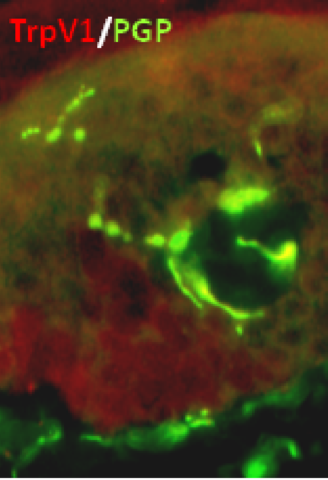
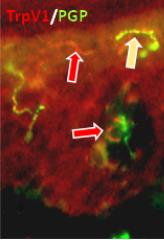
Increased TrpV1 on sensory endings (red arrows) and keratinocytes in the epidermis of humans with postherpetic neuralgia.
Petersen KL, Rice FL, Suess F, Berro M, Rowbotham MC (2002) Pain.
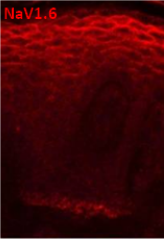
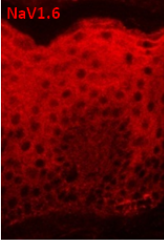
Increased NaV1.6 on keratinocytes in the epidermis of humans with complex regional pain syndrome and postherpetic neuralgia.
Zhao P, Barr TP, Hou Q, Dib-Hajj SD, Black JA, Albrecht PJ, Petersen KL, Eisenberg E, Rice FL, Waxman SG (2008) Pain.
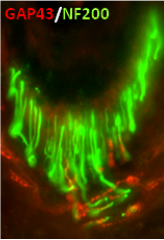
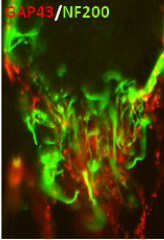
Disrupted sensory endings on hair follicles are in humans with complex regional pain syndrome.
Albrecht PJ, Hines S, Eisenberg E, Pud D, Finlay DR, Connolly MK, Paré M, Davar G, Rice FL (2005) Pain.
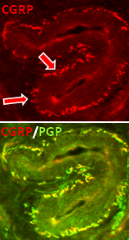
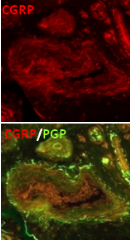
Selective loss of CGRP containing sensory endings on arteries as early as metabolic syndrome phase in aged monkeys with naturally occurring Type 2 diabetes.
Paré M, Albrecht PJ, Bodkin NL, Pittenger GL, Noto CJ, Schreyer DJ , Tigno XT, Hansen BC, Rice FL (2007) J Comp Neurol.
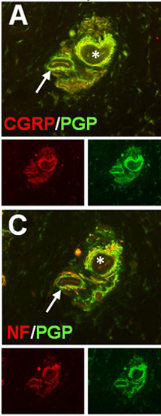
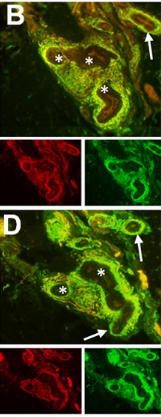
Excessive sensory innervation on arteriole-venule shunts as seen in a 3 mm skin punch biopsy from the palm of the hand in a 24-year-old female fibromyalgia patient as compared to a 26-year-old female normal control.
Albrecht PJ, Hou Q, Argoff CE, Storey JR, Wymer JP, Rice FL (2013). Pain Medicine.
Existing research, much of it conducted by the cofounders of INTiDYN, has shown that microscopic immunochemical assessments of skin sections from 3 mm punch biopsies are an invaluable means for:
Conducting research and collaborating with our extensive network of scientists and medical professionals to further understand function of the skin and related systems, as well as nerve, skin, and pain disorders, is a top priority.
View a selection of our published research